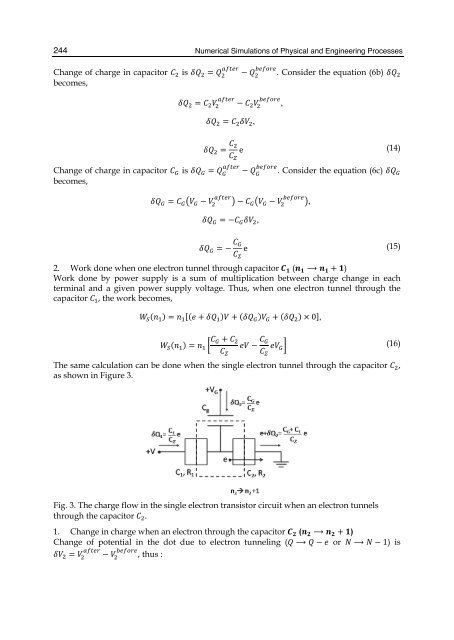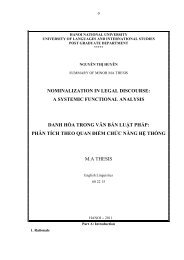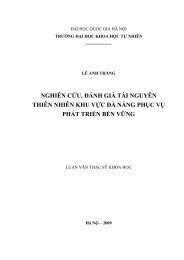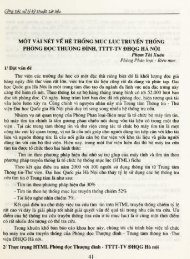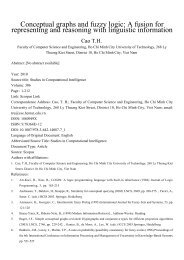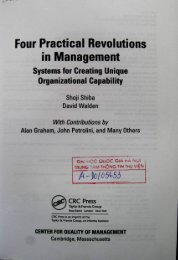Master Equation - Based Numerical Simulation in a Single Electron ...
Master Equation - Based Numerical Simulation in a Single Electron ...
Master Equation - Based Numerical Simulation in a Single Electron ...
Create successful ePaper yourself
Turn your PDF publications into a flip-book with our unique Google optimized e-Paper software.
244<br />
<strong>Numerical</strong> <strong>Simulation</strong>s of Physical and Eng<strong>in</strong>eer<strong>in</strong>g Processes<br />
<br />
Change of charge <strong>in</strong> capacitor is = − . Consider the equation (6b) <br />
becomes,<br />
<br />
= − ,<br />
= ,<br />
= e<br />
(14)<br />
<br />
Change of charge <strong>in</strong> capacitor is = − . Consider the equation (6c) <br />
becomes,<br />
<br />
= − − − ,<br />
=− ,<br />
=− e<br />
(15)<br />
2. Work done when one electron tunnel through capacitor ( ⟶ +)<br />
Work done by power supply is a sum of multiplication between charge change <strong>in</strong> each<br />
term<strong>in</strong>al and a given power supply voltage. Thus, when one electron tunnel through the<br />
capacitor , the work becomes,<br />
( ) = (+ ) +( ) + ( ) ×0,<br />
( ) = + <br />
<br />
− <br />
<br />
<br />
<br />
The same calculation can be done when the s<strong>in</strong>gle electron tunnel through the capacitor ,<br />
as shown <strong>in</strong> Figure 3.<br />
Fig. 3. The charge flow <strong>in</strong> the s<strong>in</strong>gle electron transistor circuit when an electron tunnels<br />
through the capacitor . 1. Change <strong>in</strong> charge when an electron through the capacitor ( ⟶ +)<br />
Change of potential <strong>in</strong> the dot due to electron tunnel<strong>in</strong>g ( ⟶− or ⟶−1) is<br />
<br />
= − , thus :<br />
(16)


